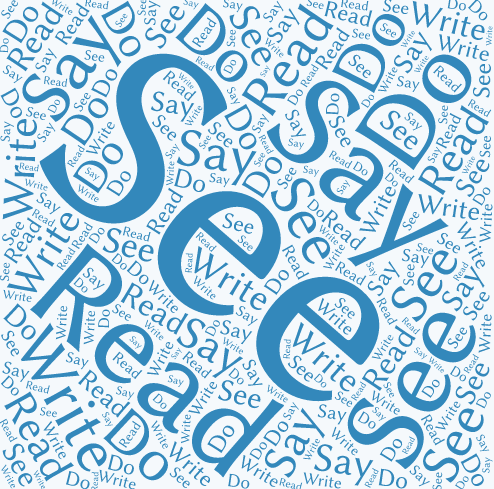I began experimenting with multi-sensory education when we brought home our two children from Ethiopia. We had so much fun with the sensory bins and tactile activities that my other kids wanted to participate too. As time went on, I realized that some of my kids had some learning issues. I had one child that was super smart and became bored easily with typical text books and workbooks. One child had dyslexia, speed processing issues and time blindness. Another child was also very smart but struggled with confidence. Another child was still struggling with a new language, had a low IQ, no visual processing ability and very poor short term and long term memory. Finally, one child who was having a hard time with reading comprehension. Now, some of these issues are less heard of - but some are pretty common. When we took the time to have our kids evaluated, I decided that I needed to find a way to teach them all together, in a way that would appeal to all of them and their learning styles.
What does multi-sensory learning look like? For us, multi-sensory learning looked like listening to famous composers and drawing what the music made us feel. Dictating a made up story about astronomy while I typed for them. Then, they would illustrate it and present it by reading aloud. Creating sea animals out of colorful clay, making a meal from pioneer times, watching a movie about the Civil War, family read alouds and so much more. This was what made our homeschooling fun. It is what engaged our children and they each made improvements on the areas they struggled with. My super smart girl took the extra time to research things she became more interested in and developed hobbies that she discovered from the things we were learning about.
If you are looking for curriculum that will help you create this kind of learning environment - look for things with lapbooks, experiments, projects, etc. Girls of American History and Historical Stories of Survival are fantastic options. Keep in mind also, that most unit studies give great opportunity for multisensory activities.
(For these and other unit studies and curriculum - you can get at a significant savings - check out the Homeschool Resources Bundle Sale
Here is some additional information about multi-sensory education -
Multisensory education accomodates many styles of both learning and educating. Here is some additional information about multisensory education. The pages under "Favorite Curriculum" list some of our favorite tried and true curricula, many of which fit the multisensory model.
People sometimes make the mistake of assuming that multisenory education is for children with learning issues. Although multisenory education is an excellent method for children with dyslexia, ADD, English as a second language and other learning challenges, it is beneficial to all children, even those that are gifted.
Multisensory education is a method of teaching that encompasses all of the senses regardless of the learning styles of the children. Although a child might be naturally equipped to learn easier using one style, it does not mean that it is the only style that child can learn from. Nor does it mean that a child can’t be taught to learn other ways. In fact, studies have shown that comprehension and academic ability benefit greatly from multisensory education.
Cora D. Dzubak, Ph. D. wrote a paper on Learning Styles and Memory. Here is an excerpt from her report:
“Input is maximized when students focus their attention and use active, multisensory study strategies resulting in the storage of information in multiple regions of the brain, depending on the type of sensory input. It stands to reason that if it is even minimally productive to use one sensory for information input, such as might be done by a visual learner, then maximizing information processing using multiple channels should result in maximal stimulation to the brain and increased storage.”
Most people tend to think of learning styles as the following:
| Visual (Spatial) | visual learners prefer pictures, images, drawings, etc |
| Aural (Auditory) | aural learners prefer sound, lectures, books on cd, music, etc |
| Physical (Kinesthetic) | verbal learners prefer to use words in both speech and writing |
Some learning styles that are less talked about are the following:
| Logical (Mathematical) | logical learners prefer to use systems, processes and logic |
| Social (Interpersonal) | social learners prefer to learn in groups |
| Solitary (Intrapersonal) | solitary learners prefer to learn independently |
Most people have more than one style that they prefer. For example, someone might be both a visual and solitary learner.
Multisensory education benefits all children regardless of age and ability. The pattern of a "Read it, Hear it, See it, Write it, and Do it" education method has been found to be more engaging, entertaining and memorable. Learning should be fun for all children, who wouldn't rather learn about the Great Depression by making their own HoBo meal over an outdoor fire pit, the Nez Perce by riding a horse, or Pompeii by erupting their own volcano or finding an ancient Roman bowl in an archeological dig kit.

